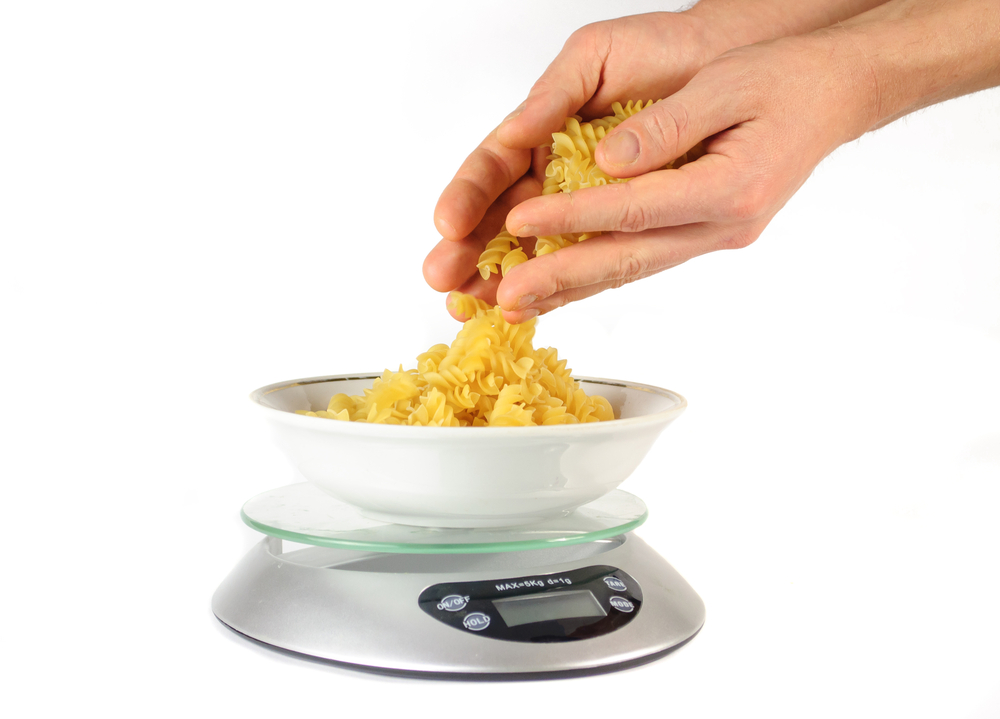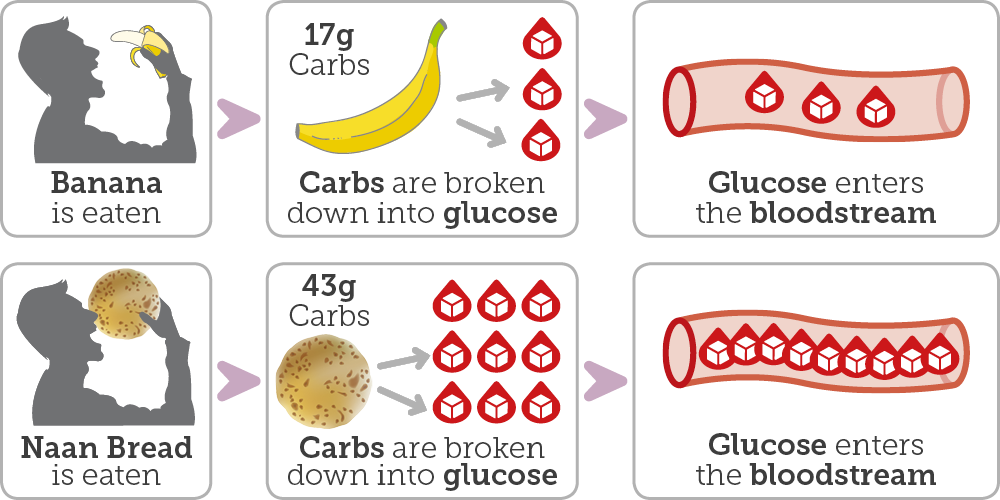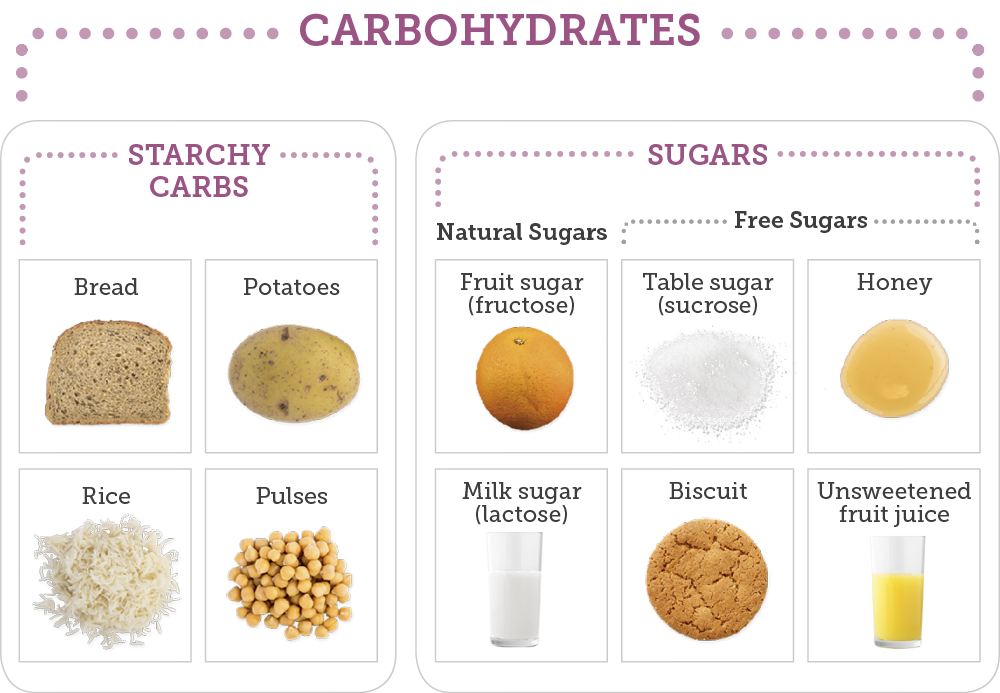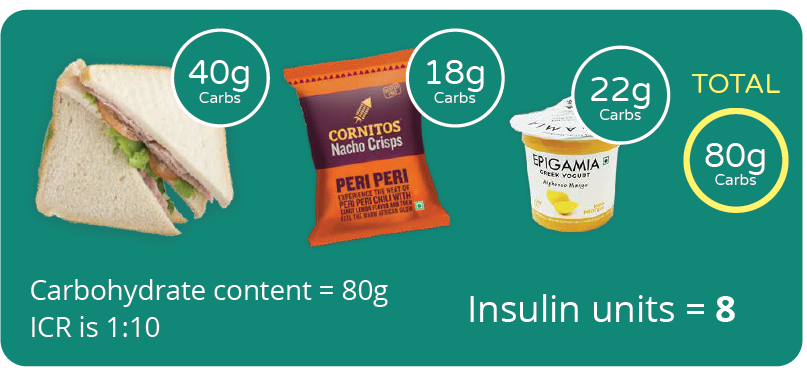Carbohydrate counting

Carbohydrates come in simple forms such as sugars and in complex forms such as starches and fibre. The body breaks down all carbohydrates into glucose, a simple sugar, that the body will use for energy. Carbohydrate counting is important if you have type 1 diabetes.

Examples of starchy carbohydrates include pasta, rice, potato, bread, chapatti and plantain. Choosing starchy carbohydrates that contain higher levels of fibre and whole grains can have less of an impact on your blood glucose levels as it takes longer for your body to break them down into glucose.

Principles of carb counting
Think about someone who doesn’t have diabetes: when they eat carbs, their body releases the precise dose of insulin they need to deal with the glucose rise in their blood. When you have type 1 diabetes, you need to get insulin into your system by other means. To make sure you are getting exactly the right amount, you have to calculate how much you need.
The advantage of counting carbs is that it enables you to eat what you want and when you want. As long as you:
- study food labels carefully,
- weigh your food and/or
- use a picture guide
If you work out how many carbs are in everything you eat, you will be able to keep your diabetes well under control. You will probably find that you tend to eat the same sort of foods and in similar quantities most of the time, and so once you have done the initial calculations it will all become easier.
Insulin to carbohydrate ratio
Carbohydrates can be counted in two ways, in grams or as carbohydrate portions (CP). One CP is usually equal to 10g of carbohydrate. So find the method that you can understand and that works better for you.
Your insulin to carbohydrate ratio (ICR) is a way of working out your mealtime insulin dose more accurately to match the carbohydrates in your food to stop your blood glucose level from going too high or low.
An ICR will tell you how much carbohydrate (CHO) will be covered by 1 unit of insulin. For example, an ICR of 1:10 means that 1 unit of insulin is needed for every 10g of carbohydrate eaten.

Because people have different sensitivities to insulin, insulin to carbohydrate ratios can vary between different people and may also be different for different mealtimes.
Your ratio can be increased or decreased to work out what the best ratio is for you. You will normally work out your personal ICR with your diabetes care team.
Mealtime insulin dose calculation
Have a look at the following example of a mealtime insulin calculation for an 80g CHO meal in a person with an ICR of 1:10:

Here is a worksheet that goes into more detail for those starting out with carb counting or for people who want to know more.
If you’d like more information on carbohydrate counting, have a look at the Diabetes UK website. It has plenty of useful information on carb counting, and you can download a free PDF from their website that lists the number of carbs in different foods.
Another excellent resource is the Carbs and Cals book or app. It has pictures of a vast number of food items with their carb content. The app also has a handy dose calculator that will work out the total carbs in your meal for you.



Leave a Reply
You must be logged in to post a comment.